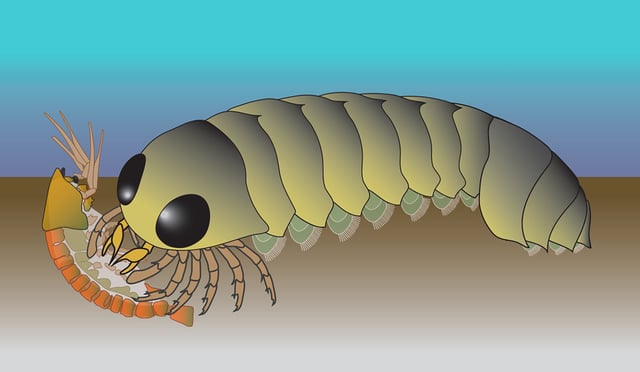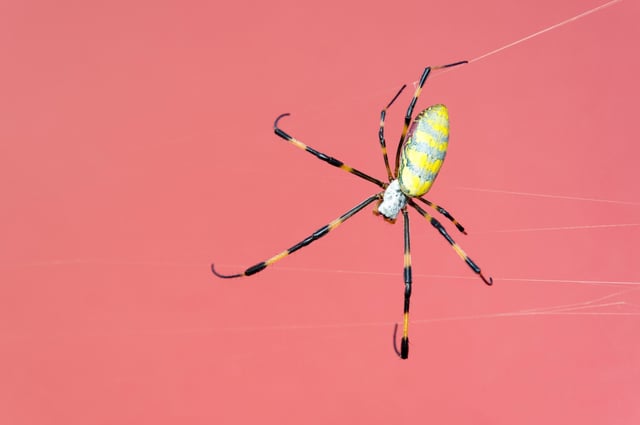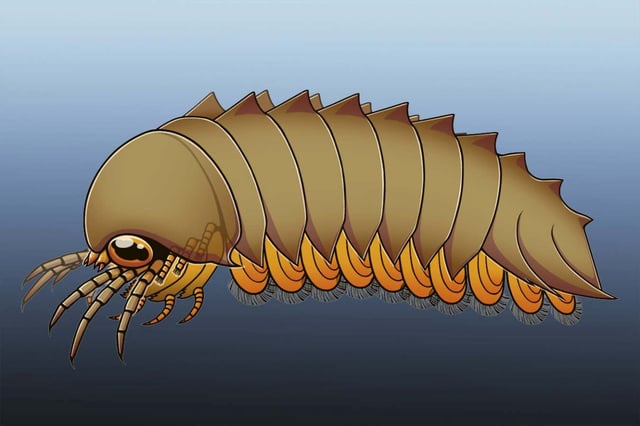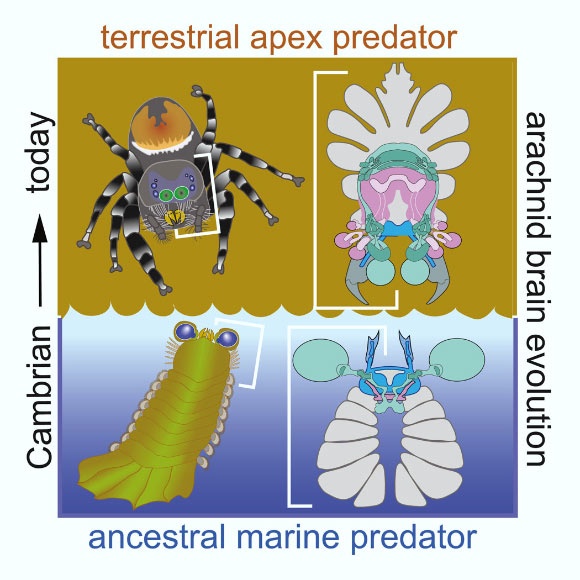Overview
- The study analyzed the fossilized nervous system of the 500-million-year-old species Mollisonia symmetrica with high-resolution imaging.
- It revealed Mollisonia’s brain has a reversed front-to-back organization identical to modern arachnids and distinct from horseshoe crabs, insects and crustaceans.
- A statistical comparison of 115 neuronal and anatomical traits placed Mollisonia as a sister group to today’s spiders, scorpions and harvestmen.
- Findings overturn the view that arachnids first diversified on land by supporting their emergence in marine environments during the Cambrian.
- Researchers are now seeking similar neural evidence in other Cambrian specimens to further validate the ocean-origin theory for arachnids.



